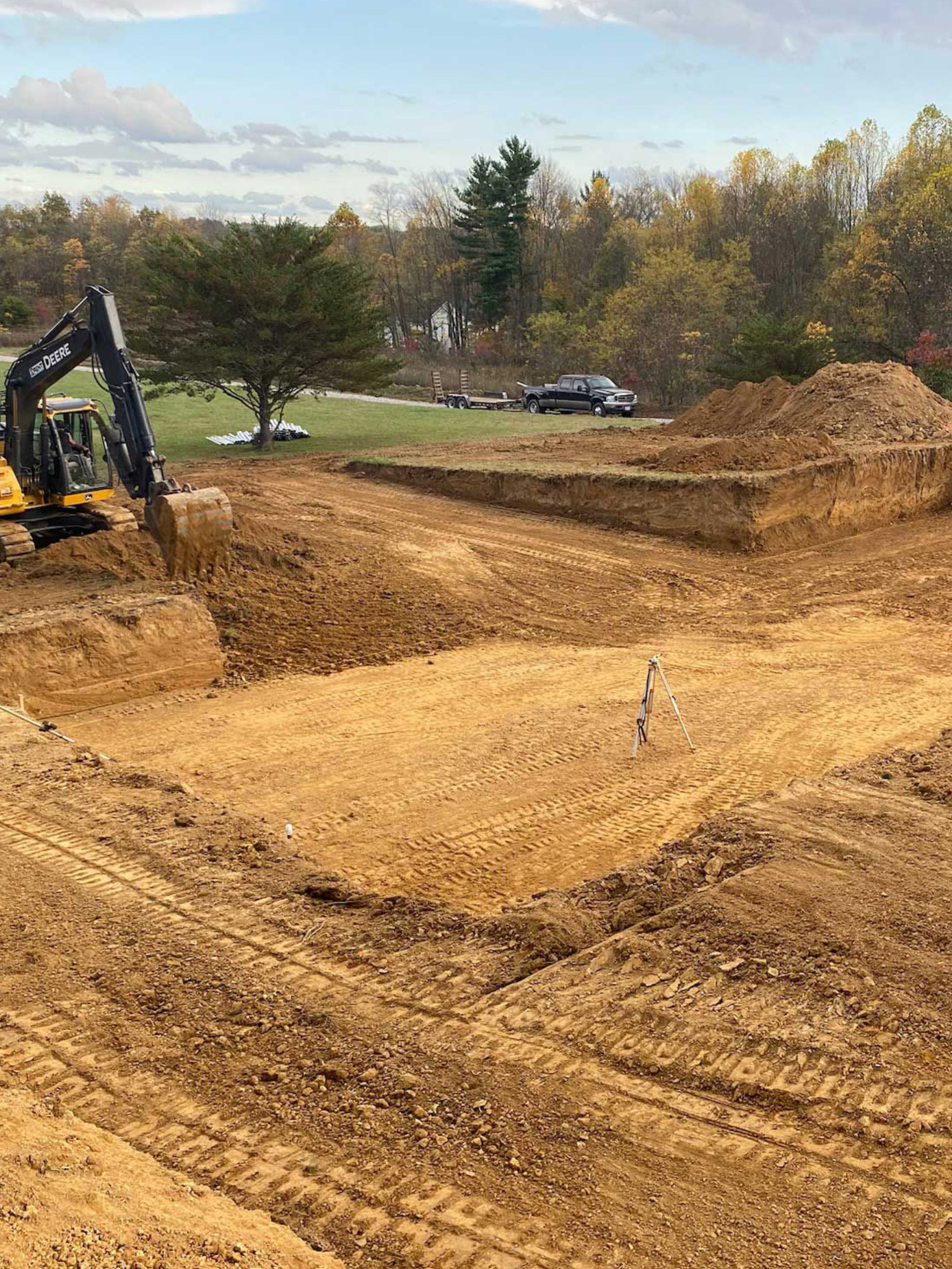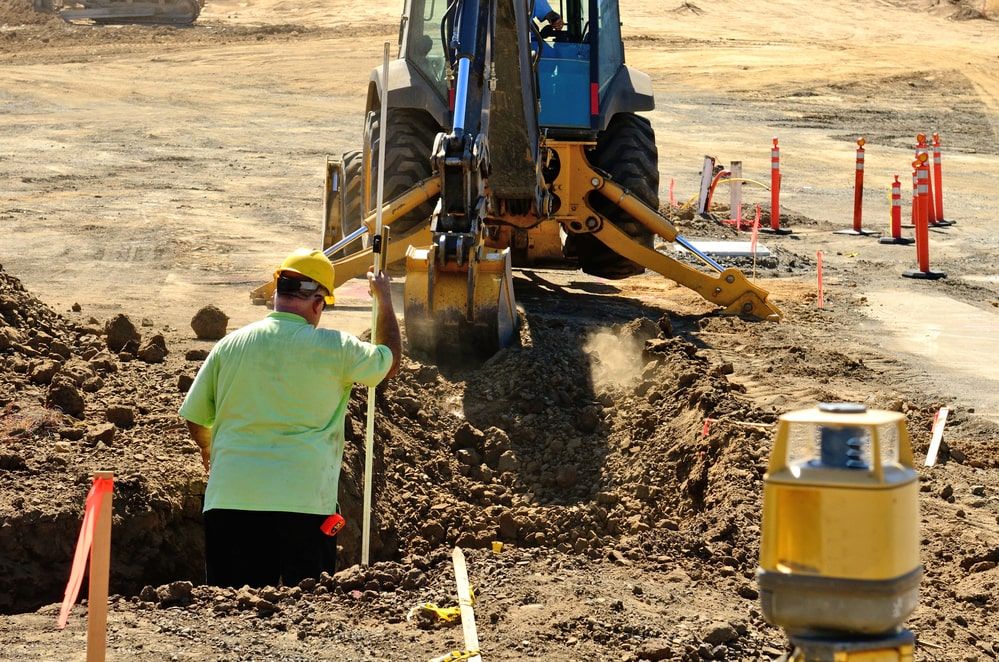Affordable Lancaster Excavation - Quality Excavation at Competitive Prices
Affordable Lancaster Excavation - Quality Excavation at Competitive Prices
Blog Article
Introducing the Art of Excavation: Pro Tips for Safe and Effective Digging
As dirt is turned and planet is moved, the details of excavation expose themselves, requiring a keen understanding of equipment, dirt composition, safety methods, and environmental factors to consider. The experience required to navigate these components successfully can indicate the distinction between a successful excavation task and a potential catastrophe.
Value of Proper Devices
To ensure the security and performance of any excavation job, making use of the ideal devices is vital. The right devices not only improve productivity however additionally reduce dangers related to digging. Excavation projects vary in extent and intricacy, varying from tiny residential landscaping tasks to massive construction tasks. No matter the project size, having the right devices can make a considerable difference in the end result.
These flexible devices come in numerous dimensions to match different job requirements. Tiny excavators are excellent for smaller jobs, while bigger excavators tackle a lot more comprehensive jobs effectively.
Apart from excavators, various other vital devices includes dump plates, excavators, and vehicles. Dump vehicles are important for getting rid of and carrying excavated materials, while plates are made use of for excavating slim and deep trenches. Excavators master tasks that require pushing large amounts of dirt or debris. By purchasing the appropriate equipment, excavation projects can be completed securely, on schedule, and with precision.
Comprehending Dirt Composition
A detailed understanding of dirt structure is essential for implementing excavation tasks with accuracy and safety and security. Recognizing the various kinds of dirt is vital as it straight affects excavation techniques, devices choice, and overall project performance.
Sand particles are the largest and provide good drainage yet supply little communication. Silt bits are smaller than sand but larger than clay, offering modest water drainage and communication. Clay particles are the smallest and offer high cohesion however poor drainage. Organic issue, such as decomposing plant material, affects soil fertility and security.
Prior to commencing excavation, performing dirt tests to establish its make-up and attributes is vital. This information aids in choosing the suitable equipment, applying precaution, and creating excavation methods tailored to the details soil problems - lancaster excavation. By recognizing soil make-up, excavation experts can boost task results while making certain security and adherence to finest techniques
Safety And Security Actions and Methods
Understanding dirt composition is the foundation whereupon precaution and protocols for excavation jobs are developed, guaranteeing the health of workers and the success of the venture. When it comes to security throughout excavation, there are several essential actions that should be carried out to minimize risks and stop crashes.
Firstly, prior to any kind of excavating commences, an extensive examination of the website ought to be carried out to recognize any kind of possible hazards such as underground utilities, unsteady soil problems, or close-by frameworks that see this site can pose a risk. It is critical to have a proficient individual look after the excavation procedure to make certain that all safety protocols are followed purely.
Furthermore, all workers involved in the excavation needs to be properly trained in secure digging methods and the correct operation of tools. Personal protective tools (PPE) such as construction hats, high exposure apparel, handwear covers, and safety boots ought to be used in all times to minimize the danger of injuries. lancaster excavation. Routine safety meetings and toolbox talks need to additionally be conducted to keep all workers notified about possible dangers and reinforce secure work practices. By adhering to these security procedures and procedures, excavation jobs can be finished effectively and without occurrence.
Reliable Excavation Preparation
When starting an excavation job, careful planning is vital to make sure effectiveness, safety, and effective results. Efficient excavation planning entails a number of essential actions that are critical for the smooth implementation of the project. The initial step is to carry out a detailed website evaluation to determine any type of potential hazards, such as underground energies or unsteady soil conditions. This info is important for creating an in-depth excavation plan that consists of precaution and take the chance of mitigation strategies.
When the website assessment is full, the next step is to develop a clear timeline and schedule for the excavation activities. This includes identifying the series of jobs, equipment needs, and manpower appropriation. Proper scheduling assists stay clear of hold-ups and makes sure that the project remains on track.

Furthermore, communication amongst all staff member is extremely important throughout the preparation phase. Clear directives, regular updates, and effective sychronisation are essential for a successful excavation project. By spending effort and time in meticulous planning, excavation groups can substantially boost efficiency, lessen dangers, and accomplish effective results.

Handling Environmental Factors To Consider
With enhancing emphasis on ecological sustainability in building techniques, handling environmental factors to consider has come to be a crucial aspect of excavation tasks. Excavation activities have the possible to affect the surrounding setting with dirt disintegration, sediment overflow, habitat interruption, and contamination of water sources. To alleviate these risks, it is crucial to execute ideal methods that focus on environmental defense.

In addition, appropriate waste monitoring is critical to avoid dirt and water contamination. Carrying out treatments for the disposal of harmful materials, recycling of waste materials, and reducing making use of damaging chemicals can dramatically lower the ecological effect of excavation jobs. By integrating these practices right into excavation preparation and implementation, building companies can ensure that their tasks are not just risk-free and productive yet likewise environmentally responsible.
Verdict
Finally, grasping the art of excavation needs a complete understanding of appropriate equipment, dirt composition, precaution, and reliable planning. By adhering to these standards and thinking about ecological aspects, excavations can be conducted securely and effectively. It is essential to prioritize safety and security and efficiency in every excavating job to ensure effective outcomes.
As dirt is turned and planet is moved, the details of excavation expose themselves, requiring a keen understanding of tools, soil make-up, security methods, and environmental factors click here for more info to consider.To guarantee the safety and security and effectiveness of any kind of excavation project, making use of the appropriate devices is paramount.A detailed understanding of dirt composition is basic for performing excavation tasks with precision and security. Recognizing the different kinds of dirt is important as it straight impacts excavation techniques, tools selection, and general job performance. By comprehending dirt make-up, excavation professionals can improve task end results while ensuring safety and security and adherence to best methods.
Report this page